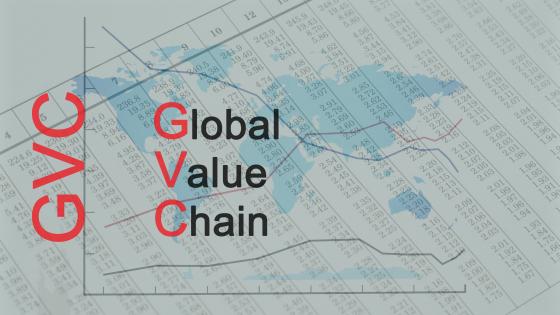Global value chains (GVCs) have been hit hard by the COVID-19 crisis. A number of recent columns in VoxEU warn against the risks of a reversal in economic globalisation and an unprecedented downsizing of the existing international production system (Bamber et al. 2020, Baldwin and Freeman 2020, Espitia et al. 2020, Kilic and Marin 2020, Mirodout 2020, Pitsch 2020, Seric and Winkler 2020, Stellinger at al. 2020).
However, COVID-19 is not the only gamechanger. The crisis caused by the pandemic arrives on top of existing mega-challenges to the system of international production arising from the new industrial revolution (Baldwin 2019, Bolwijn et al. 2019, Brun et al. 2019, Casella and Formenti 2018), growing economic nationalism (UNCTAD 2018, Blanchard 2019, Bellora and Fontagnè 2019, Zhan 2019) and the sustainability imperative (UNCTAD 2015, De Backer and Flaig 2017, Kolk et al. 2017, Zhan 2016). These challenges were already reaching an inflection point; the demand, supply and policy shocks caused by the pandemic are set to tip the scales.
UNCTAD’s World Investment Report 2020 (WIR20) not only takes stock of the impact of COVID-19 on FDI, but it also looks well beyond at the likely transformation of international production over the next decade 2021-2030. Recognising the uncertainty facing the global production system, it aims to provide a broad analytical framework to encompass the likely future trajectories and address the range of policy options for navigating the expected decade of transformation ahead.
2030 is also the horizon for the implementation of the United Nations Sustainable Development Goals. With less than a decade left and a huge investment gap to fill in developing countries, WIR20 comes at a critical juncture, making it all the more important to evaluate the implications of the expected changes on the FDI landscape over the coming years (UNCTAD 2014, UNCTAD 2019, Zhan et al 2020).
The pandemic magnifies existing challenges
The World Investment Report has monitored FDI and the activities of MNEs for 30 years, during which time international production saw two decades of rapid growth followed by a decade of stagnation. Flows of cross-border investment in physical productive assets stopped growing in the 2010s, the growth of trade slowed down and GVC trade declined (figure 1).
Figure 1 The long-term trend of international production
Note: Trade is global exports of goods and services. GVC share of trade is proxied by the share of foreign value added in exports, based on the UNCTAD-Eora GVC database (Casella et al., 2019). The underlying FDI trend is an UNCTAD indicator capturing the long-term dynamics of FDI by netting out fluctuations driven by one-off transactions and volatile financial flows. (FDI, trade and GDP indexed, 2010 = 100; GVCs per cent)
The 2010s were only the quiet before the storm. The crisis caused by the COVID-19 pandemic arrives on top of existing challenges to the system of international production arising from the new industrial revolution (NIR), growing economic nationalism and the sustainability imperative (Table 1). The decade to 2030 is likely to prove a decade of transformation for international production.
Table 1 Megatrends shaping the future of international production
Direction of the transformation in the post-pandemic era
WIR20 develops an analytical framework to assess the prospects for international production and GVCs. It shows that the megatrends listed above play out in three dimensions via four trajectories across five industry groupings.
Trade and investment trends unfold in three key dimensions of international production: the degree of fragmentation and the length of value chains (short to long), the geographical spread of value added (concentrated to distributed), and the governance choices of MNEs that determine the prevalence of arm’s length trade vs FDI. Several archetypical configurations can be identified covering industries that, together, account for the lion’s share of global trade and investment. They include capital- and labour-intensive industries in the primary sector; high- and low-tech GVC-intensive industries; geographically dispersed processing and hub-and-spoke industries; and high and lower value-added services industries (Figure 2, upper section).
The effects of the technology, policy, and sustainability trends on international production are multifaceted. They are at times mutually reinforcing, and at others push in opposite directions; also playing out differently across industries and geographies. Depending on the starting point of individual industries – their archetypical international production configurations – they will tend to favour one of four trajectories (Figure 2, lower section).
- Reshoring will lead to shorter, less fragmented value chains and a higher geographical concentration of value added. It will primarily affect higher-technology GVC-intensive industries. The implications of this trajectory include increased divestment and a shrinking pool of efficiency-seeking FDI.
- Diversification will lead to a wider distribution of economic activities. It will primarily affect services and GVC-intensive manufacturing industries. This trajectory will increase opportunities for new entrants (economies and firms) to participate in GVCs, but its reliance on supply chain digitalization will cause those GVCs to be more loosely governed, platform-based and asset-light.
- Regionalisation will reduce the physical length but not the fragmentation of supply chains. The geographical distribution of value added will increase. This trajectory will affect regional processing industries, some GVC-intensive industries and even the primary sector.
- Replication will lead to shorter value chains and a rebundling of production stages. It will lead to more geographically distributed activities, but more concentrated value added. It will be especially relevant for hub-and-spoke and regional processing industries.
Figure 2 Current configurations of international production and future trajectories
Note: Geographical distribution refers to the number of countries accounting for 80% of value added in a specific GVC industry, based on UNCTAD calculations using data from the Eora 26 database. Length is measured by the number of production stages in a specific GVC industry based on Miroudot and Nordström (2015).
Although the different trajectories show that the expected transformation of international production is not unidirectional, the overall direction of travel points towards:
- Shorter and less fragmented value chains
- More concentrated value added
- More platform-driven and asset-light value chain governance
- A shift from global to regional and sub-regional value chains
- Downward pressure on global efficiency-seeking FDI in favour of regional market-seeking FDI
- Downward pressure on global trade in intermediate goods, less on trade in final products
- A shift in some industries from large-scale investment to smaller-scale distributed manufacturing
- Continued growth and fragmentation in services value chains
- Resilience and national security concerns as key drivers of GVC diversification
- A shift from GVC-investment to cross-border investment in infrastructure, domestic services and in the green and blue economies driven by the sustainability imperative
Policy implications: towards a new GVC-development path
Policymakers need to prepare for the challenges arising due the transformation of international production and be ready to capture the opportunities.
Challenges include increased divestment, relocations, investment diversion, and a shrinking pool of efficiency-seeking investment implying tougher competition for FDI. Value capture in GVCs and development based on vertical specialisation will become more difficult. Industrial infrastructure built for a world of GVCs will see diminishing returns. Changes in locational determinants of investment will often negatively affect the chances of developing countries to attract MNE operations.
Opportunities arising from the transformation include attracting investors looking to diversify supply bases and building redundancy and resilience. The pool of regional market-seeking investment will increase. Shorter value chains will bring more investment in distributed manufacturing and final-goods production with broader industrial capacity building and clustering. And digital infrastructure and platforms will enable new applications and services and improve bottom-up access to GVCs. The sustainability imperative will lead to more green and blue investment and value chains.
Confronting the challenges and capturing the opportunities requires a change in the investment-development path (figure 3). From a focus on export-oriented efficiency-seeking investment in narrowly specialised GVC segments, the focus needs to be reoriented towards a broader export-led strategy which extends to investment in production for regional markets and regional industrial clustering. Similarly, there needs to be a shift in focus from cost-based competition for single-location investors to competition for diversified investments based on flexibility and resilience. And from prioritizing large-scale industrial investors with ‘big infrastructure’ to making room for small-scale manufacturing facilities and services with ‘lean infrastructure’.
Finally, a shift in investment promotion strategies towards infrastructure and services is necessary. For the past three decades international production and the promotion of export-oriented manufacturing investment has been the pillar of development and industrialisation strategies of most developing countries. Investment geared towards exploiting factors of production, resources and low cost labour will remain important, but the pool of such investment is shrinking. A degree of rebalancing towards growth based on domestic and regional demand and on services, as well as the green and blue economy, will be the new path forward.
Figure 3 Towards a new GVCdevelopment path
References
Bamber, P, K Fernandez-Stark and D Taglioni (2020), “Why global value chains remain essential for COVID-19 supplies”, VoxEU.org, 20 May.
Baldwin, R (2019), The Globotics Upheaval, Oxford: Oxford University Press.
Baldwin, R and R Freeman (2020),. “Trade conflict in the age of Covid-19”, VoxEU.org, 22 May.
Bellora, C and L Fontagné (2019), “Shooting oneself in the foot? Trade war and global value chains”, mimeo, CEPII.
Blanchard, E (2019), “Trade wars in the global value chain era”, VoxEU.org, 20 June.
Bolwijn, R, B Casella and J Zhan (2018), “International production and the digital economy”, in R van Tulder, A Verbeke and L Piscitello (eds), International Business in the Information and Digital Age (Progress in International Business Research, Vol. 13), Emerald Publishing, pp. 39–64,
Brun, L, G Gereffi and J.Zhan (2019), “The ‘Lightness’ of Industry 4.0 Lead Firms: Implications for Global Value Chains”, (pp. 37-67) in P Bianchi, C Ruiz Durán and S Labory (eds), Transforming Industrial Policy for the Digital Age: Production, Territories and Structural Change, Cheltenham, UK: Edward Elgar.
Casella, B, R Bolwijn, D Moran and K Kanemoto (2019), “Improving the analysis of global value chains: the UNCTAD-Eora database”, Transnational Corporations, 26(3):115–142.
Casella, B and L Formenti (2018), “FDI in the digital economy: a shift to asset-light international footprints”, Transnational Corporations, 25(1):101–130.
De Backer, K and D Flaig (2017), “The future of global value chains: Business as usual or a new normal?”, OECD Science, Technology and Industry Policy Papers, No. 41, OECD Publishing, Paris.
Espitia, A, N Rocha, and M Ruta (2020), “COVID-19 and food protectionism”, VoxEU.org, 24 May.
Kolk, A, A Kourula and N Pisani (2017), "Multinational enterprises and the Sustainable Development Goals: What do we know and how to proceed?", Transnational Corporations, vol. 24/3.
Kilic, K and D Marin (2020), “How COVID-19 is transforming the world economy”, VoxEU.org, 10 May.
Miroudot, S and H Nordstrom (2015), “Made in the world,” EUI Working Paper RSCAS 2015/60.
Miroudot, S (2020), “Resilience versus robustness in global value chains”, VoxEU.org, 18 June.
Pisch, F (2020), “Just-in-time supply chains after the Covid-19 crisis”, VoxEU.org, 30 June.
Seric, A and D Winkler (2020), “COVID-19 could spur automation and reverse globalization – to some extent”, VoxEU.org, 28 April.
Stellinger, A, H Isakson and I Berglund (2020), “To protect public health, preserve global value chains”, VoxEU.org, 26 June.
UNCTAD (2014), World Investment Report 2014: Investing in the SDGs: An Action Plan, New York and Geneva: United Nations.
UNCTAD (2015), Investment Policy Framework for Sustainable Development, New York and Geneva: United Nations.
UNCTAD (2017), World Investment Report 2017: Investment and the Digital Economy, New York and Geneva: United Nations.
UNCTAD (2018), World Investment Report 2018: Investment and New Industrial Policies, New York and Geneva: United Nations.
UNCTAD (2019), SDG Investment Trends Monitor, 23 September, 2019. New York and Geneva: United Nations.
UNCTAD (2020), World Investment Report 2020: International Production Beyond the Pandemic, New York and Geneva: United Nations.
Zhan, J (2016), G20 Guiding Principles for Global Investment Policymaking: a facilitator’s perspective, Think Piece Series, World Economic Forum and International Centre for Trade and Sustainable Development.
Zhan, J (2019), “Global investment trends and policies at times of uncertainty”, in Sachs L, Johnson L (eds.) Yearbook on International Investment Law & Policy 2018, Oxford, United Kingdom: Oxford University Press.
Zhan, J, B Cacella and R Boldwijn (2020), “Towards a new generation of special economic zones: sustainable and competitive”, in A Oqubay and J Lin (eds), Oxford Handbook on Industrial Hubs and Economic Development, Oxford, United Kingdom: Oxford University Press.









